RamaOnHealthcare November 20, 2024
Today, RamaOnHealthcare talks with David Johnson.
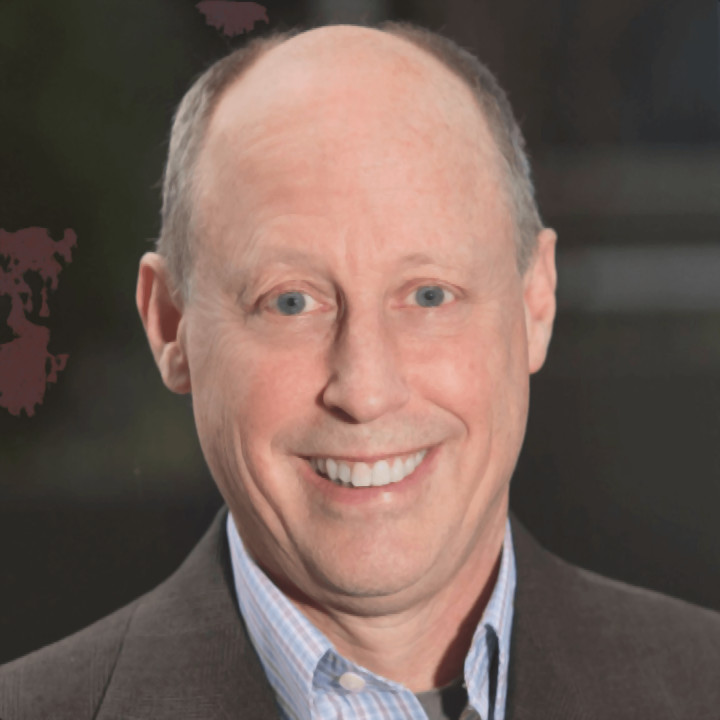
David Johnson
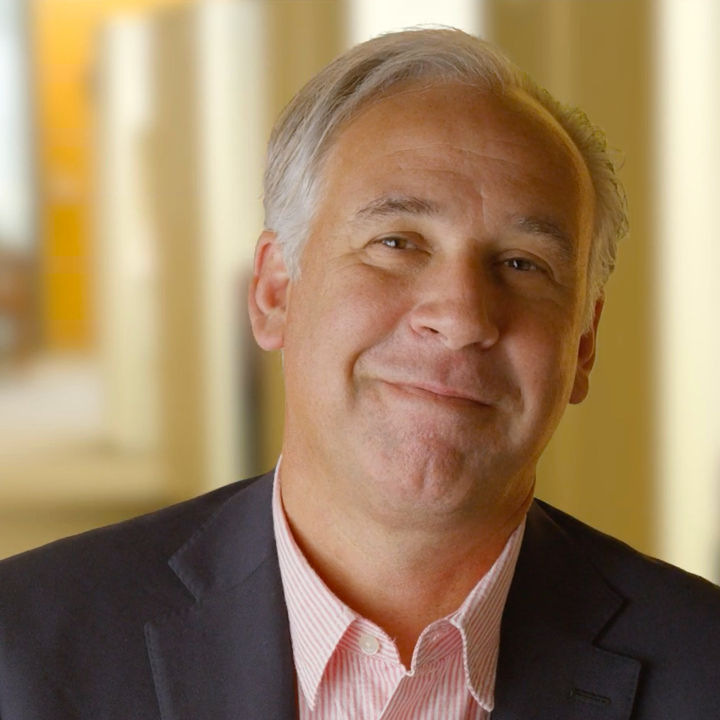
Paul Kusserow
New Book by David W. Johnson & Paul Kusserow
The Coming Healthcare Revolution: The 10 Forces that Will Cure America’s Health Crisis
RamaOnHealthcare (ROH): Why did you and Paul Kusserow write this book?
David Johnson (DJ): I helped Paul write, “The Anatomy of a Turnaround: Transforming an Organization by Prioritizing People, Performance and Purpose,” which published in 2023. The book tells Paul’s remarkable personal story and the metamorphosis of the home health giant Amedisys in four stages under his stewardship. In his book, Paul chronicles Amedisys’ journey and the strategies underlying it from turnaround through stability, growth and transformation. It is essential reading for CEOs seeking a path forward through internal and external disruption.
As part of the book’s development process, Paul drafted over 100 pages of policy-oriented content. While insightful, I didn’t believe this policy content didn’t fit within the contours of his book. After spirited debate, Paul agreed and suggested that we write a “policy” book together. That concept evolved into our jointly-authored “The Coming Healthcare Revolution: Ten Forces that will Cure America’s Health Crisis.”
In another way, “The Coming Healthcare Revolution” is also the final volume of my three-part examination of market-driven healthcare reform. This trilogy consists of “Market vs. Medicine” published in 2016, “The Customer Revolution in Healthcare” published in 2019, and “The Coming Healthcare Revolution” published this year.

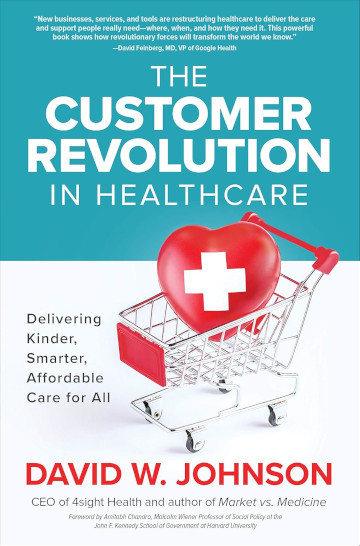
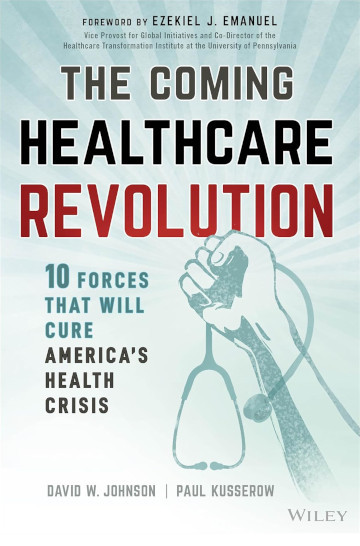
ROH: Tell us more about the trilogy and its progression.
DJ: I write to understand. With the writing of this book, I’m completing a ten-year journey to understand the complex mechanics of U.S. healthcare, the forces that underlie its anti-competitive behaviors and the countervailing forces that are pushing the industry toward value and consumerism.
…the forces that underlie its anti-competitive behaviors and the countervailing forces that are pushing the industry toward value and consumerism.
Markets allocate resources better than governments. My first book, “Market vs. Medicine: America’s Epic Fight for Better, Affordable Healthcare,” applied competitive market theory to the U.S. healthcare, illustrating its fundamental operating flaws while exploring how both sustaining and disruptive innovation could reshape the industry’s supply-demand dynamics. Our team came up with this cool “4A” graphic to illustrate the book’s four sections:
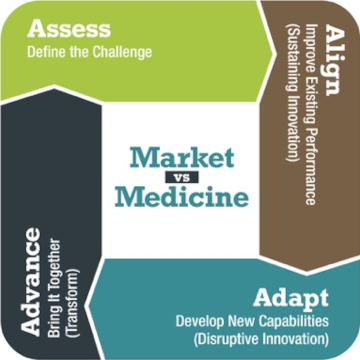
In some ways, my four stages mirror Paul’s four stages of company transformation – an indication of great things to come. The final segment, “Advance,” wrestled with the conundrum that fixing healthcare isn’t enough. As a nation, we also have to improve the health and wellbeing of the American people. This is the topic that most consumes me now.
In writing “The Customer Revolution in Healthcare: Delivering Kinder, Smarter, Affordable Care for All,” I wanted to understand why the U.S. healthcare industry failed to improve incrementally. There has been progress. Curing hepatitis C, fine-tuning anesthesia and imaging breakthroughs among so many others have transformed healthcare delivery. Despite advances, however, U.S. healthcare’s long-term trend has been every greater societal spending to treat an increasingly sick population. Why?
The answer comes from President Eisenhower’s “Farewell Address” in January 1961. In it, Eisenhower warned against the dangers posed by the “military industrial complex,” where a conjunction of industry, the Defense Department and Congress works together for their collective interest at the expense of greater society. U.S. healthcare is the largest industry ever created by human beings. It has the equivalent of the military industrial complex on steroids.
U.S. healthcare is the largest industry ever created by human beings.
“The Customer Revolution in Healthcare,” has three sections: Revolutionary Conditions; Revolutionary Forces; and Revolutionary Healthcare. They explore in sequence the grounds for disrupting U.S. healthcare, the means for achieving that end, and the post-reform character of a value-driven delivery system.
“The Coming Healthcare Revolution” is a megatrends book. It identifies five macro-economic forces pressing down on U.S. healthcare, demanding change. Each force is powerful in its own right. Together, they are irresistible and creating cracks within status quo healthcare. Paul and I also identify five powerful market forces that innovative companies are incorporating to disrupt slow-footed incumbents from the bottom-up.
“The Coming Healthcare Revolution” is a megatrends book.
The three books together are a detailed owner’s manual for executives seeking to understand and navigate through healthcare’s perilous supply-demand dynamics. They also are a manifesto and call to arms for revolutionary, market-driven reform.
ROH: Why is healthcare different from other industries?
DJ: Competitive markets fuel disruption, allocate resources efficiently and determine product fitness through buy-sell signaling. In contrast to other industries, healthcare operates within an artificial economic system that rewards manipulation of complex payment formularies and enables regulatory capture by powerful incumbents.
…healthcare operates within an artificial economic system….
ROH: How soon will the revolution occur?
DJ: The working title for “The Coming Healthcare Revolution” was “Gradually, Then Suddenly” taken from Ernest Hemmingway’s description of bankruptcy in “The Sun Also Rises.” We’re much closer to the “suddenly” stage than most incumbents realize.
Paul and I believe the healthcare industry will change more in the next ten years than in the last one hundred. Moreover, that change will occur more outside-in than inside-out. Consequently, this transformation will be messy. Many incumbents will not survive.
…the healthcare industry will change more in the next ten years than in the last one hundred. Moreover, that change will occur more outside-in than inside-out.
Incumbents that retain market relevance will do so by embracing democratized and decentralized distribution of whole-person health (3D-WPH). Beyond this, their product and service offerings will be Cheaper, Better, more Balanced between health and healthcare, Easier and Empowering for both consumers and caregivers. The acronym CB2E2 captures these attributes.
ROH: Why does healthcare require a revolution?
DJ: Status-quo U.S. healthcare is fundamentally broken and financially unsustainable. It is impossible to incrementally reform a broken system. As a consequence, the transformation coming to U.S. healthcare will be exponential in character, centered on achieving better individual and community health outcomes at lower costs with superior customer service. Revolution, not evolution, is the appropriate description for the scale and speed of transformation that is at our doorstep. Buckle up!
Revolution, not evolution….
ROH: Any advice for incumbents?
DJ: Historically, healthcare organizations have been strategically defensive. That strategy has worked. Society has funded expenditure growth without evidence of needed reforms. That strategy will no longer work. American society will no longer continue to pay for inferior outcomes delivered inefficiently.
American society will no longer continue to pay for inferior outcomes delivered inefficiently.
It’s time to play offense. Determine where and how your company creates value and competitive advantage. Invest there. Channel your inner-Gandhi. Become a part of a healthcare system where you would desire to receive care yourself.
About David W. Johnson
David is the CEO and Founder of 4sight Health, a healthcare media and advisory company. A former investment banker to many of the nation’s largest health systems, David is now a leading thought leader, strategist, advisor, lecturer, and policy analyst.
About Paul Kusserow
Paul is the Chairman and former Chief Executive Officer of Amedisys (AMED), a publicly traded, leading provider of home health, hospice, palliative, personal care, and high-acuity care services with over 22,000 employees in 39 states, and the District of Columbia, making over 12.3 million patient visits per year.





